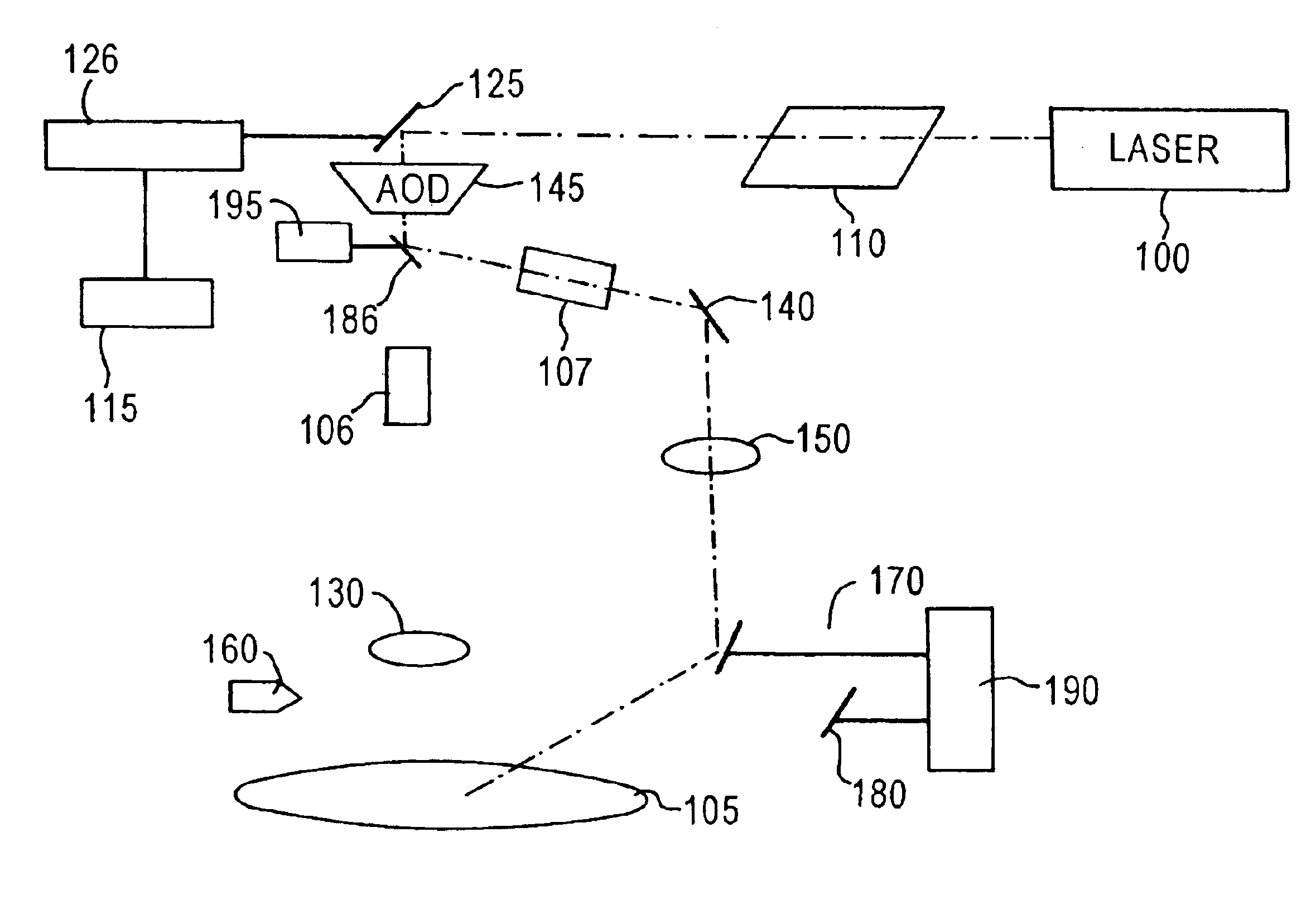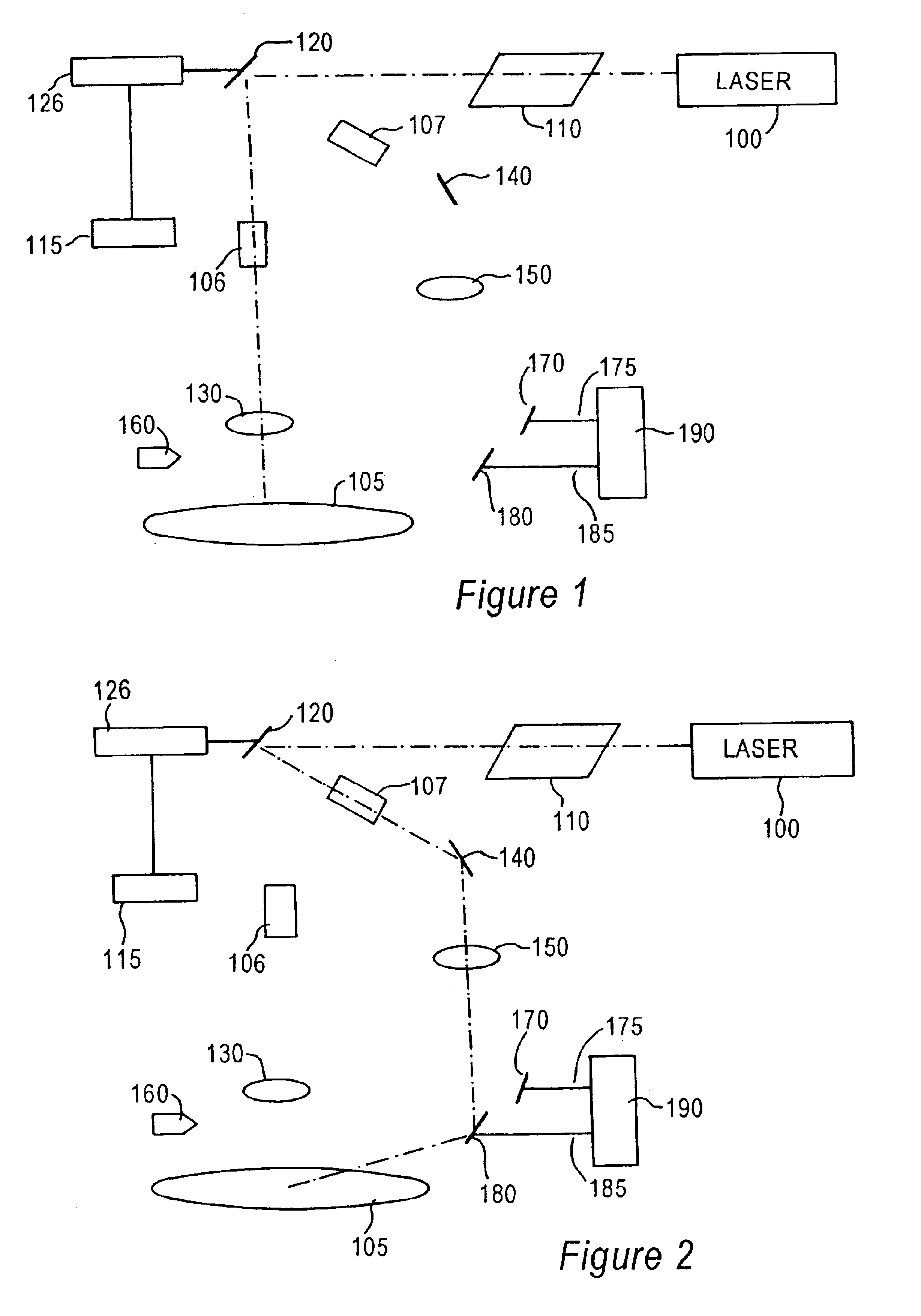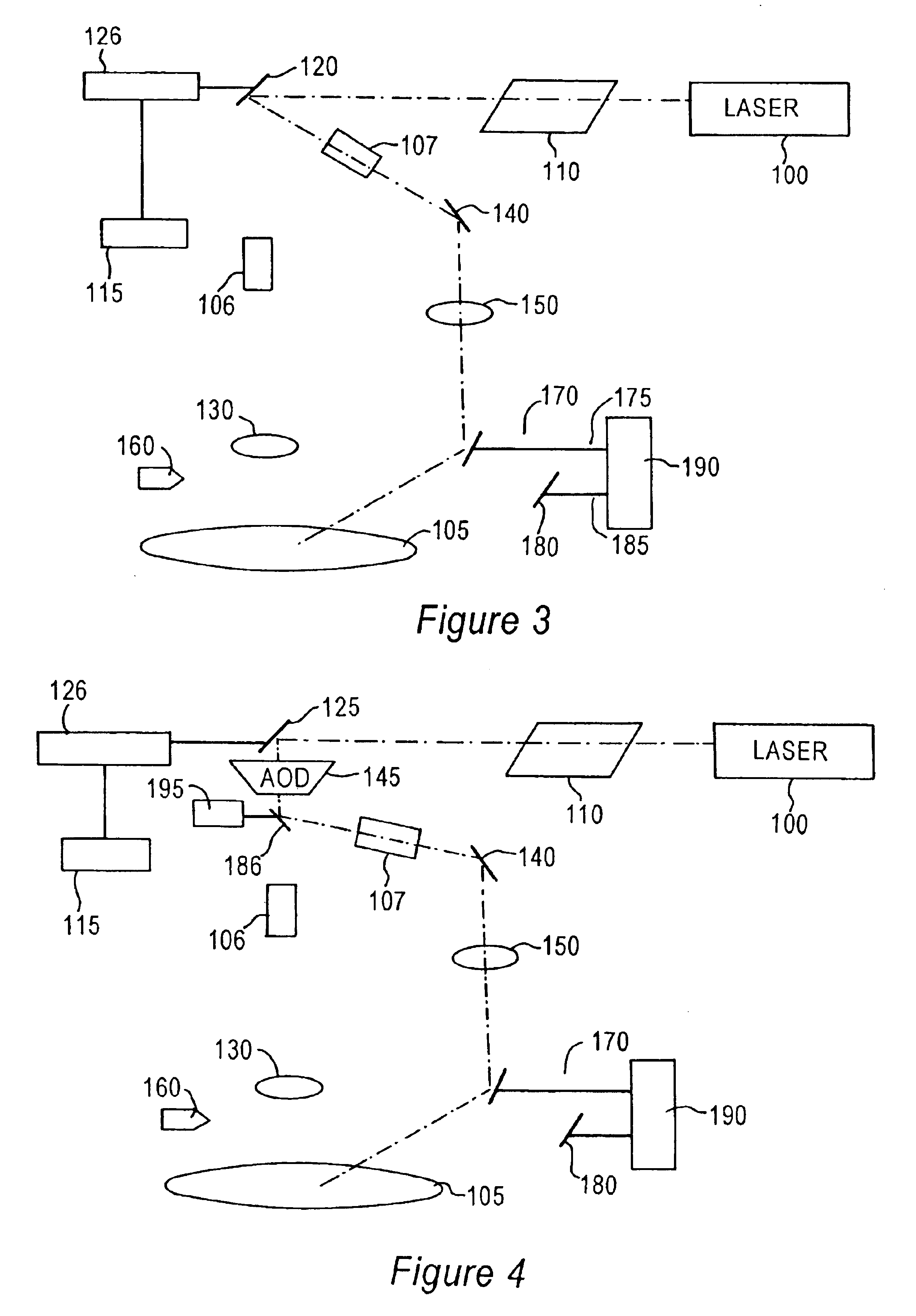Variable angle illumination wafer inspection system
a wafer inspection and variable angle technology, applied in the field of wafer inspection systems, can solve the problems of inability to penetrate the light between dense lines, roughness and graininess of other materials, and less useful than normal illumination for some layers, etc., and achieve the effect of optimizing the inspection characteristics of a scanned layer
- Summary
- Abstract
- Description
- Claims
- Application Information
AI Technical Summary
Benefits of technology
Problems solved by technology
Method used
Image
Examples
Embodiment Construction
FIG. 1 illustrates a first embodiment of the invention. Laser 100, such as an argon laser or other suitable high intensity laser beam source, provides a light beam which is used to scan the surface of a semiconductor wafer or substrate 105 held by a vacuum chuck. Conventional optics 110 are used to shape the light beam and may include, for example, a beam expander and cylindrical lenses (not shown). The foregoing components and their principles of operation are well-known and are therefore not described herein in detail.
A mechanism for scanning the laser beam is provided. This mechanism for scanning the laser beam may include, as well known in the art, a galvanometric scanning planar mirror, a rotating polygon mirror, an acousto-optic deflector (AOD), or any other mechanism for imparting the requisite laser scan motion to the laser beam, wherein this mechanism is represented in FIG. 1 by reference numeral 120 and is hereinafter referred to equally as scanning element 120. Additional...
PUM
 Login to View More
Login to View More Abstract
Description
Claims
Application Information
 Login to View More
Login to View More - R&D
- Intellectual Property
- Life Sciences
- Materials
- Tech Scout
- Unparalleled Data Quality
- Higher Quality Content
- 60% Fewer Hallucinations
Browse by: Latest US Patents, China's latest patents, Technical Efficacy Thesaurus, Application Domain, Technology Topic, Popular Technical Reports.
© 2025 PatSnap. All rights reserved.Legal|Privacy policy|Modern Slavery Act Transparency Statement|Sitemap|About US| Contact US: help@patsnap.com



